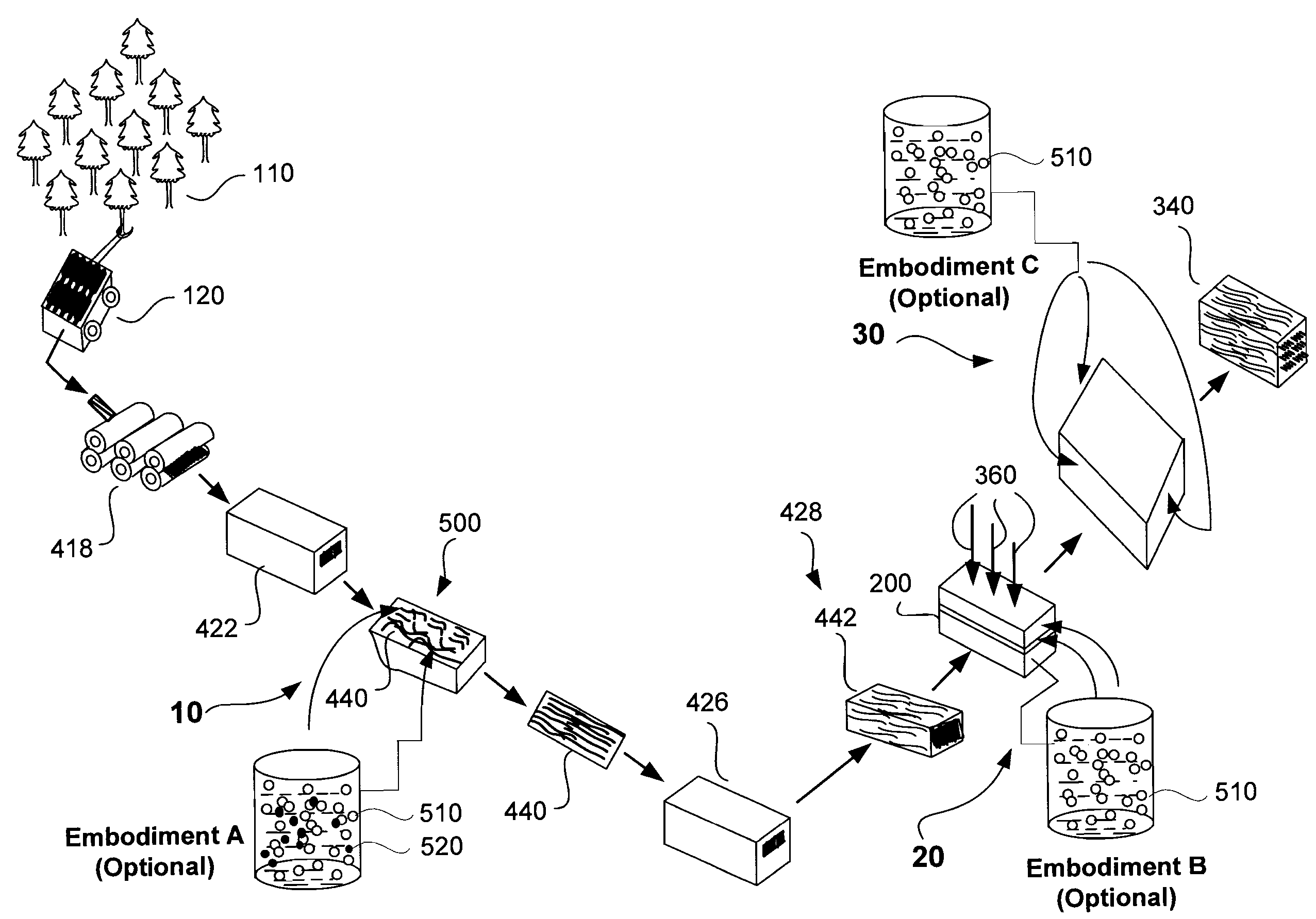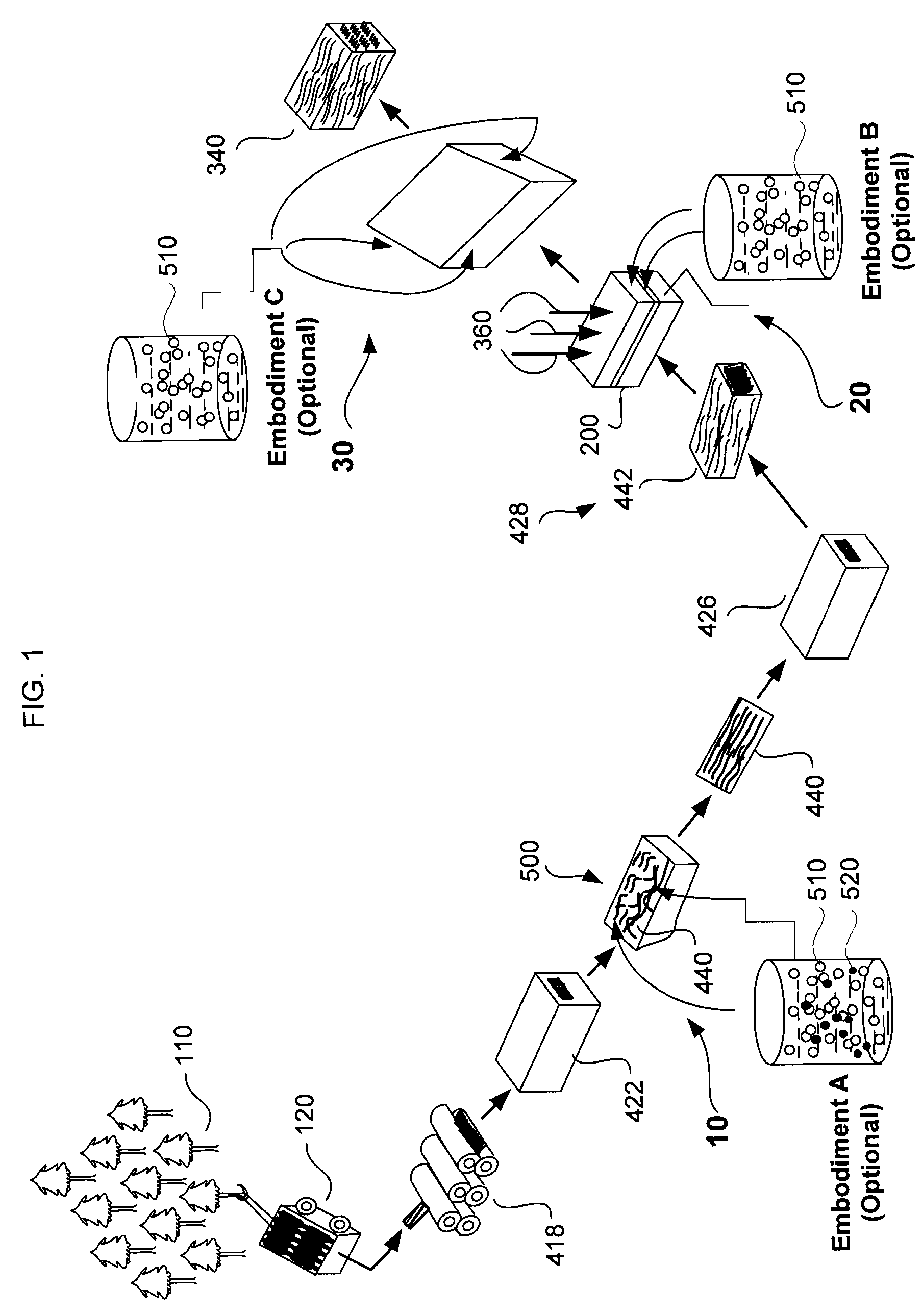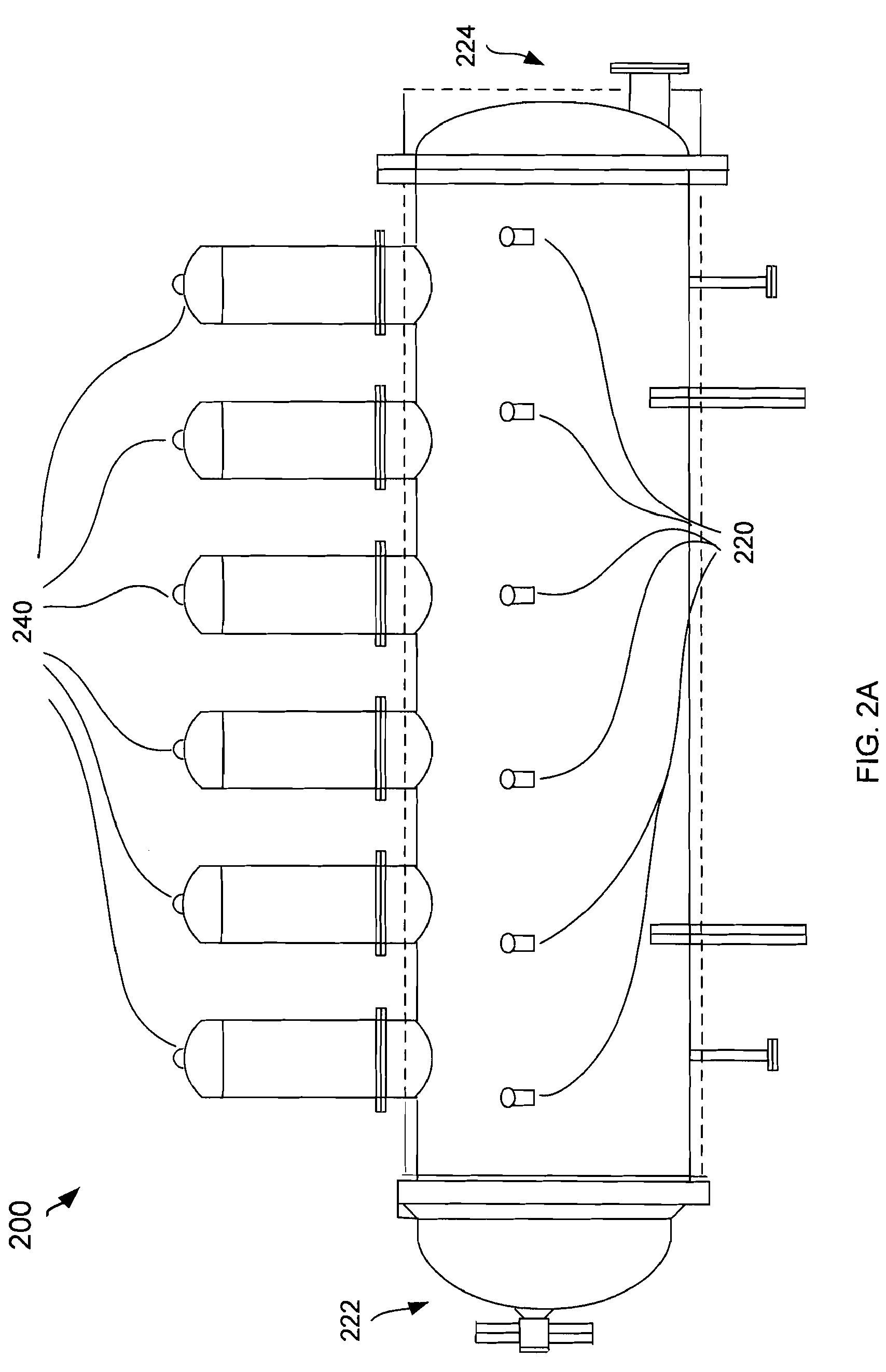System and method for the preservative treatment of engineered wood products
a technology of preservative treatment and engineered wood products, which is applied in the field of preservative treatment can solve the problems of insufficient supply of other tree species to keep up with the demand for durable products, insufficient supply of these trees, and limitations of the methods used in chemical treatment of wood and wood products, so as to preserve the stability and quality of engineered wood products, the effect of less cos
- Summary
- Abstract
- Description
- Claims
- Application Information
AI Technical Summary
Benefits of technology
Problems solved by technology
Method used
Image
Examples
example 1
[0089]A loose scrim mat is treated with the wood enhancement agent CEDARTREAT™ in combination with an adhesive or bonding agent in an adhesive application tank as shown and described in the referenced and incorporated patent applications. CEDARTREAT is a solvent-based green or dry wood penetrant admixture of cedar oil, silane, and a solvent manufactured by CedarCide Industries, Inc., 4405 N Frazier St., Conroe, Tex. 77303-1442. Color enhancement or dye may be added to the mixture to achieve a desired shade of color and provide a basis for measuring penetration. The scrim mat is later subjected to a pressing operation with a steam press, also as described in the referenced and incorporated patent applications, to form a billet of engineered wood product.
[0090]Internal bond tests are run on the engineered wood products produced by addition of adhesives alone or by addition of a mixture comprising adhesives and wood enhancement agents to the scrim strands during the billet making proce...
example 2
[0092]A mat of scrim-based material is treated with the wood enhancement agent CEDARTREAT by application of the agent within a steam press. The wood enhancement agent is applied by spraying the material onto the mat (a) immediately before the pressing operation, (b) immediately after the pressing operation but before removal of the billet from the steam press, or (c) both. It is believed that the surfaces of the billet will cool enough after the treatment application to create a slight vacuum within the billet to enhance the absorption of the wood enhancement agent.
[0093]After the treatment, the billet is removed from the steam press and subjected to further process steps to form wood enhancement treated engineered wood product, including cutting the billet to desired widths and / or lengths.
example 3
[0094]A warm billet of scrim-based engineered wood product is treated with the wood enhancement agent CEDARTREAT after it has been removed from a steam press. The warm billet is dipped, flow-treated, or sprayed with the wood enhancement agent. It is believed that the surfaces of the billet will cool enough during the treatment to create a slight vacuum within the billet to enhance the absorption of the CEDARTREAT material.
[0095]After the treatment, the billet is subjected to further process steps to form wood enhancement treated engineered wood product, including cutting the billet to desired widths and / or lengths.
PUM
 Login to View More
Login to View More Abstract
Description
Claims
Application Information
 Login to View More
Login to View More - R&D
- Intellectual Property
- Life Sciences
- Materials
- Tech Scout
- Unparalleled Data Quality
- Higher Quality Content
- 60% Fewer Hallucinations
Browse by: Latest US Patents, China's latest patents, Technical Efficacy Thesaurus, Application Domain, Technology Topic, Popular Technical Reports.
© 2025 PatSnap. All rights reserved.Legal|Privacy policy|Modern Slavery Act Transparency Statement|Sitemap|About US| Contact US: help@patsnap.com



